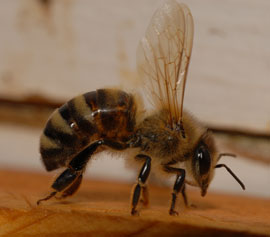
by Mary Salinas | Mar 21, 2018

European honey bee. Photo credit: UF/IFAS.
Bees, butterflies and other insects play important roles as pollinators in our environment. Over 50 major crops in the United States and at least 13 crops in Florida depend on honey bees. Many native plants in natural areas also depend on insect pollinators for reproduction. In Florida, over 300 bee species play a role in pollination!
Many factors affect the health of our pollinators. One of those factors we can easily control in our own landscapes is exposures to pesticides. How are bees and other pollinators exposed to pesticides? Here are some of the major routes:
- Drift of pesticides sprayed in breezy/windy conditions
- The erosion of contaminated topsoil blowing in the wind
- Direct feeding on pollen and nectar of treated plants
- Contact with pesticides that have blown onto plant surfaces
- Contact with water transpired by leaves of treated plants
- Pesticides that move down through the soil to affect ground dwelling bees and other insects
Did you know that bees become statically charged when they fly causing particles in the air to attract to them?
What are some ways that we can reduce the risk of exposure to pollinators in our landscapes?
- Use integrated pest management principles to reduce the incidence of pests and their impacts.
- Avoid treating areas containing flowering weeds/plants with insecticides. If you must treat your lawn with an insecticide, and it contains flowering weeds, mow the lawn and remove the flowers just before applying the insecticide.
- If you must apply a systemic insecticide to your lawn, leave a buffer strip of several feet between the lawn and the border of landscape beds with flowering plants. This will prevent the flowering plants from up taking the systemic product.
- Postpone any insecticide treatment until after all blooms have fallen from flowering ornamentals. Never apply an insecticide to blooms or flowering plants.
- Avoid the use of neonicotinoids as this class of insecticides can be more toxic to bees than other classes of insecticides. There are many effective alternatives.
Bee friendly to our pollinators!
For more information:
Minimizing Honey Bee Exposure to Pesticides
Creating and Maintaining Healthy Pollinator Habitat – Xerces Society
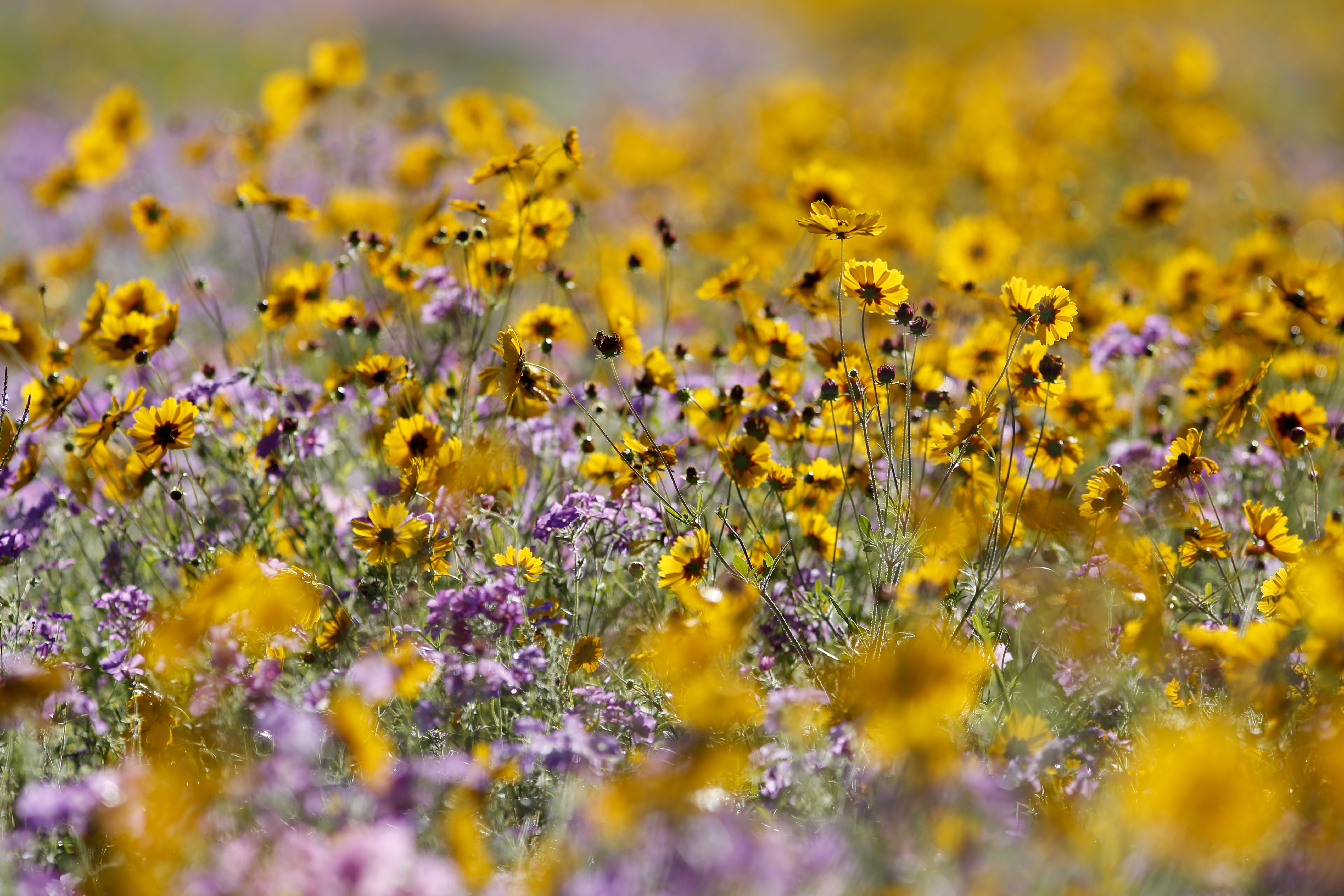
by Sheila Dunning | Jun 22, 2017
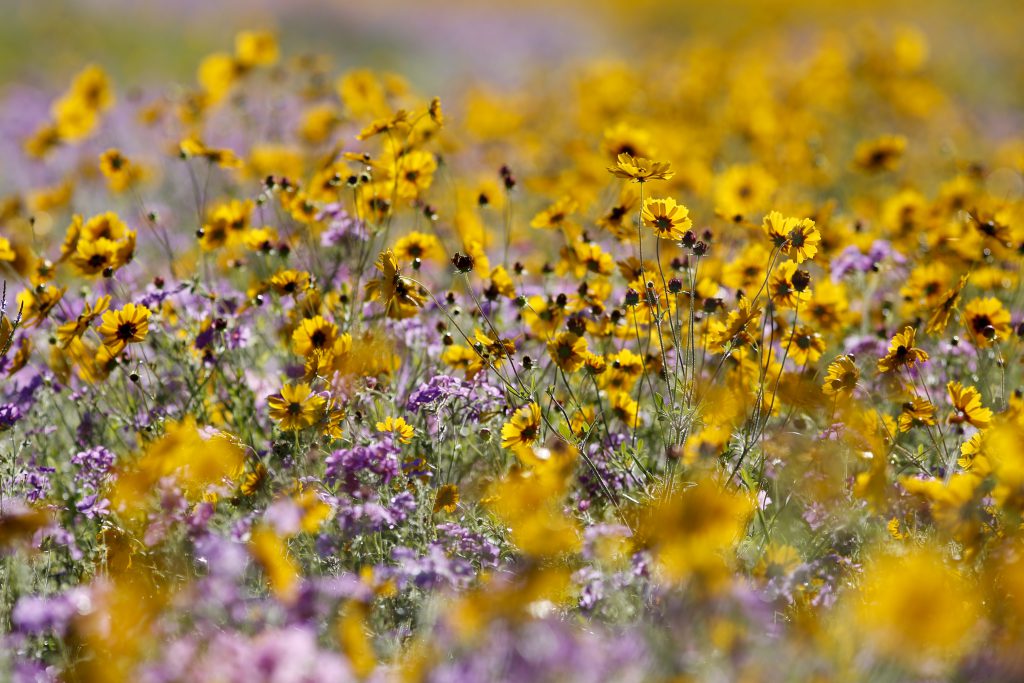
Wildflowers near Live Oak, Florida. Image Credit, UF / IFAS
Unfortunately, reports from the National Research Council say that the long-term population trends for some North American pollinators are “demonstrably downward”.
Ten years ago the U.S. Senate unanimously approved and designated “National Pollinator Week” to help raise awareness. National Pollinator Week (June 19-25, 2017) is a time to celebrate pollinators and spread the word about what you can do to protect them. Habitat loss for pollinators due to human activity poses an immediate and frequently irreversible threat. Other factors responsible for population decreases include: invasive plant species, broad-spectrum pesticide use, disease, and weather.
So what can you do?
- Install “houses” for birds, bats, and bees.
- Avoid toxic, synthetic pesticides and only apply bio-rational products when pollinators aren’t active.
- Provide and maintain small shallow containers of water for wildlife.
- Create a pollinator-friendly garden.
- Plant native plants that provide nectar for pollinating insects.
There’s a new app for the last two.
The Bee Smart® Pollinator Gardener is your comprehensive guide to selecting plants for pollinators based on the geographical and ecological attributes of your location (your eco-region) just by entering your zip code. Filter your plants by what pollinators you want to attract, light and soil requirements, bloom color, and plant type. This is an excellent plant reference to attract bees, butterflies, hummingbirds, beetles, bats, and other pollinators to the garden, farm, school and every landscape.
The University of Florida also provides a low-cost app for Florida-Friendly Plant Selection at: https://fyn.ifas.ufl.edu/plants or go on-line to create a list of these same plants at: http://www.deactivated_site/
Not only can you find out which plants attract pollinators, you will be given the correct growing conditions so you can choose ‘the right plant for the right place’.
Remember, one out of every three mouthfuls of food we eat is made possible by pollinators.
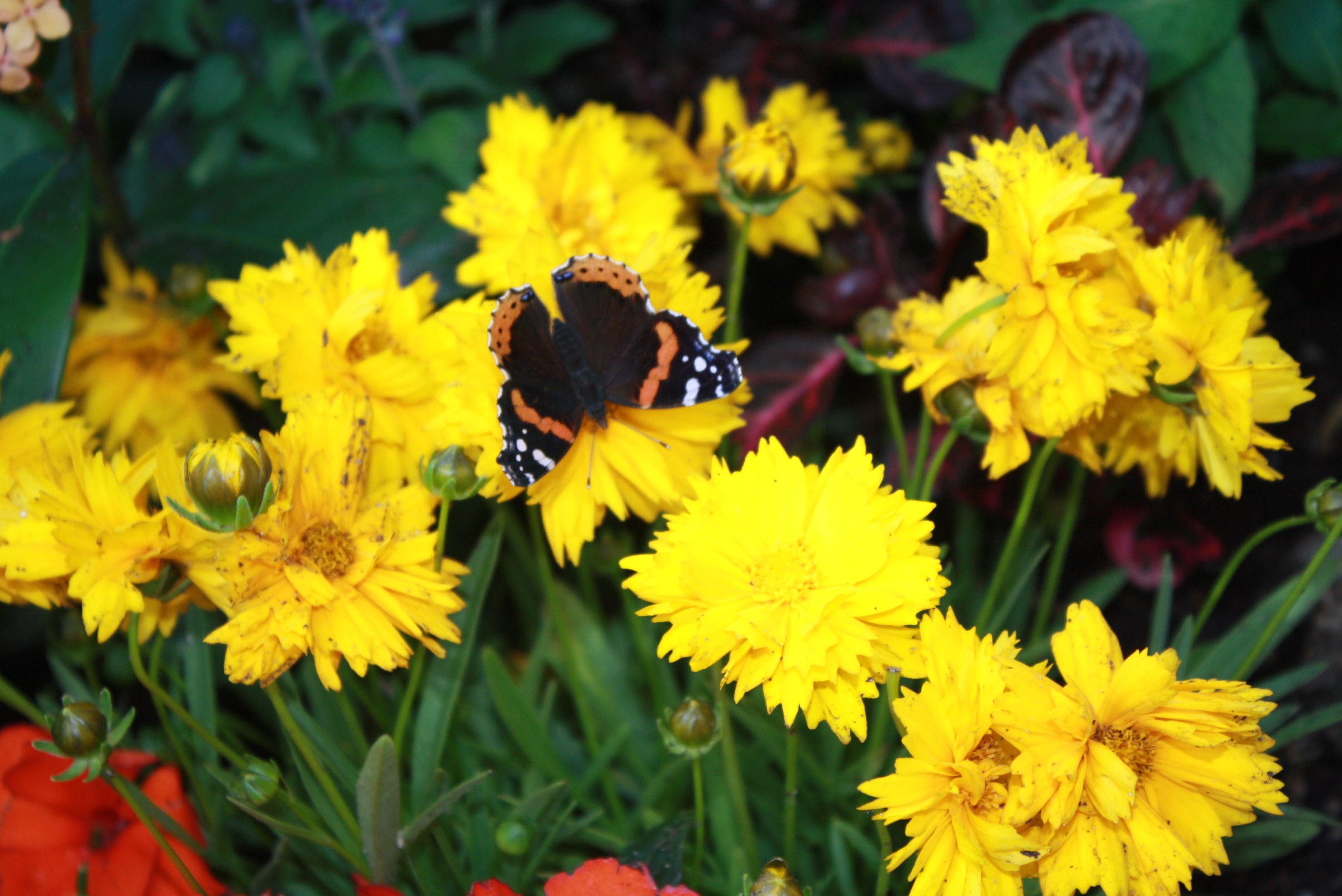
by Matt Lollar | Jun 2, 2017
The Jackson County Master Gardeners are hosting a Mead Making Workshop on Saturday, June 17 at the Jackson County Agricultural Center Classroom, 2741 Penn Avenue, Marianna, FL. Registration opens at 8:30 AM (Central Time) and the event will end at 2:00 PM.
Mead is an alcoholic beverage made from fermenting honey. Mead is described in various writings from Aristotle, Pliny the Elder, and in the epic poem Beowulf. This workshop will teach you everything you need to know in order to make your own mead at home! You will go home with a small carboy, airlock, honey, and yeast.

The registration fee is $35.00 and covers lunch and all materials and equipment to make your own mead. The workshop is limited to 24 participants. For more information, please see the Mead Making Workshop Flyer. You can pay at the door, but we do ask that you call the Jackson County Extension Office to RSVP at: 850-482-9620 or email mlollar@ufl.edu.
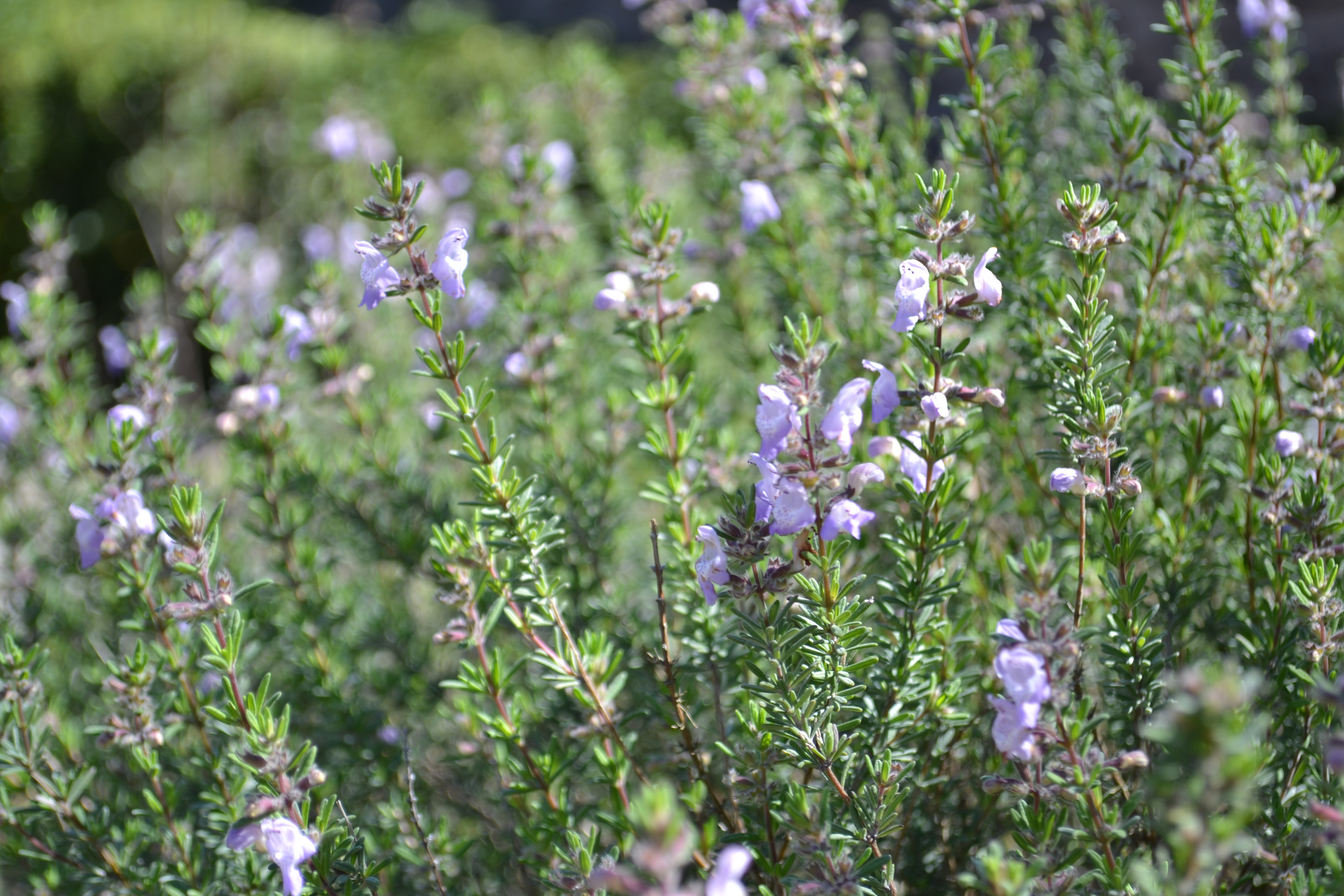
by Beth Bolles | Mar 30, 2017
We often talk about sandy, nutrient poor soil in Florida and how difficult it is for growing many favorite landscape plants. Gardeners may spend considerable time and money amending soils with organic matter to improve quality.
The low maintenance approach is to embrace your sandy soil and consider plants that thrive in sandy, well-drained soil. One very attractive native shrub that actually prefers this type of soil is false rosemary, Conrandina canescens.
False rosemary is a member of the mint family that is well adapted to drier, sandy soils. It can be found in many coastal communities growing in natural areas. It is easily recognized in the spring and early summer by light purple blooms. Considered a small shrub or groundcover, False rosemary needs full sun. One plant can easily spread out to 4-5 feet in diameter with a height of 2-3 feet.
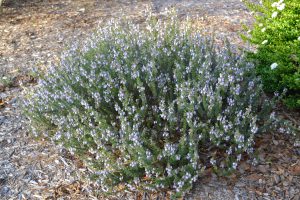
False rosemary is an attractive native plant for Gulf Coast landscapes. Photo by Beth Bolles, UF Escambia County Extension
False rosemary does have aromatic foliage and is attractive to bees. It is a very low maintenance plant once established and its few issues tend to be related to soils with too much moisture and plants being shaded after establishment. New seedlings will emerge around the main plant when growing conditions are right. If you want to try this native plant in your landscape, talk to a local nursery.
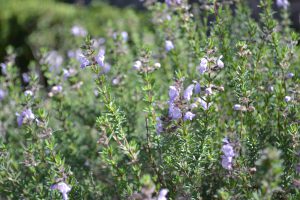
False rosemary flowers are attractive to pollinators. Photo by Beth Bolles, UF Escambia County Extension
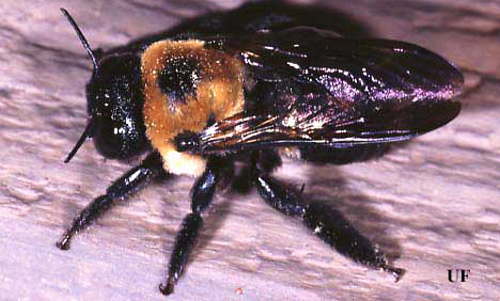
by Les Harrison | May 17, 2016
The hectic pace to contemporary life can justifiably be compared to the seemingly erratic behavior of insect pollinators. Darting from flower to flower with no apparently logical progression for choice of blooms, all the while emitting a mind numbing buzz.
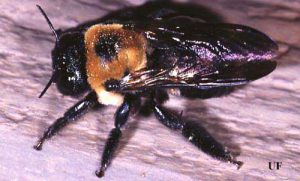
Adult large carpenter bee, Xylocopa sp. Photograph by Paul M. Choate, University of Florida.
This incessant and unending grind of bouncing from task to task has created an atmosphere of tedium and monotony which has become the anthem of many adults. As quick as one chore is complete, another replaces it. Russian composer Nokoli Rimsky-Korsakov wrote what might be considered today’s theme song at the dawn of the 20th century. “Flight of the Bumblebee” catches the frantic haste at which this insect functions, as well as its commonly encountered cousin the carpenter bee.
Bumblebees and carpenter bees are very similar in behavior, coloration and size. The easiest way to differentiate these insects is by their abdomen, the body segment furthest from the head. Bumblebees have an abdomen thickly covered in fine hairs. Carpenter bees lack the fine hairs and have a shiny abdomen.
Xyloxop micans Lepeletier, as the large carpenter bee is known scientifically, is one of more than 500 species worldwide. Almost all members of this genus build their nest by burrowing into dead wood. In the wilds of the panhandle this usually means deadfall timber of almost any sort. Unfortunately, in the areas which include human structures, the nesting sites include wooden timbers and siding.
Unlike European honeybees, the carpenter bees are labeled as solitary bees. There may, however, be several nests in close proximity to these active insects.
Nests are composed of a single parent that lays eggs in a segmented tubular nest. The nest openings are a nearly perfect 5/8 inch (16 mm) hole. Each nest has only a single opening, but multiple tunnels will branch off the main passage. These bees do not eat the wood removed to create the nest channels. Sometimes the holes are not visible to the observer, but the wood emits a buzzing or humming sound when these bees are nesting in hidden locations. In many cases small quantities of saw dust can be found on the ground under the hidden nest.
Heavy or repeated infestations can weaken structural timbers and severely damage siding. Decay and breakage will ultimately follow an untreated incursion.
While the damage caused by carpenter bees can be quite expensive, they may attract an even more destructive predator. Woodpeckers, especially the native pileated woodpecker, dine on carpenter bee larvae at every opportunity. These feathery insect assassins are attracted to the vibrations and hums of the bees hidden in wood. In some cases, the wood acts as a resonator and amplified the insect noise which assures an aerial assault. When discovery of the larvae is confirmed, the woodpeckers attack with a ferocity seldom seen in nature. The rapid-fire staccato of their hammering is loud and devastating.
Structural supports are compromised far beyond the damage done by the carpenter bees, and at a quicker rate. Siding is often shredded and left completely useless.
Commonly available insecticides can help control the carpenter bee population and reduce the prospects of woodpecker damage. Unfortunately, this only adds one more item to the long list of chores and task of contemporary adults.
For more information:
Featured Creatures: Large Carpenter Bees










